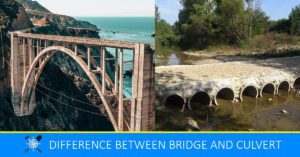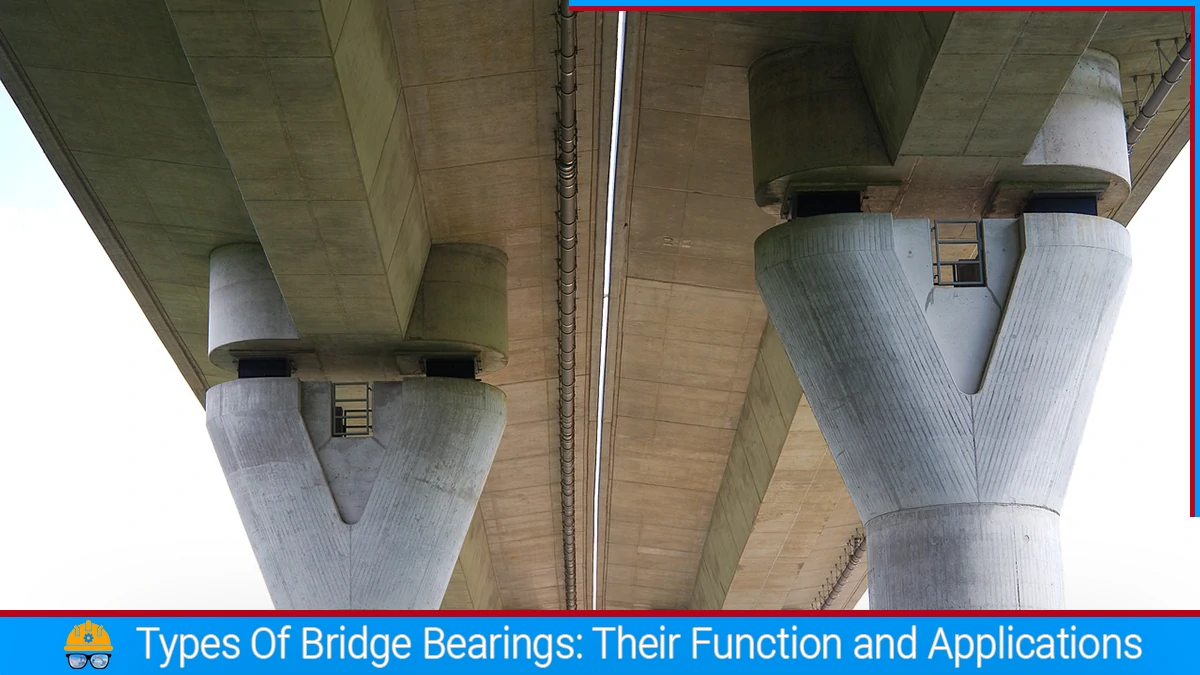Introduction
Bridges are a structure that is built to span physical obstacles, such as bodies of water, valleys, or highways, in order to provide a pathway for people, vehicles, or goods to cross from one side to the other. There are several types of bridges based on their superstructure, including beam bridges, arch bridges, suspension bridges, cable-stayed bridges, and truss bridges. Understanding the differences between these types of bridges can help engineers and designers choose the best option for a particular location and purpose.
Types of Bridges
The following are the types of bridges based on the superstructure.
Beam Bridge
A beam bridge is one of the simplest and oldest types of bridges and is made up of horizontal beams that are supported at each end by piers or abutments. The beams can be made of various materials, including wood, steel, or concrete, and are placed across the gap that needs to be bridged.
The weight of the bridge and any load on it is supported by the beams, which are designed to bend slightly under the load. The bending force on the beams is known as the bending moment, and the ability of the beams to resist bending is known as their flexural strength.
Beam bridges are usually constructed in spans of up to 250 feet (76 meters), although longer spans are possible with special designs. Longer beam spans may require the use of trusses or other support structures to help distribute the load and prevent excessive bending.
The advantages of beam bridges are their simplicity, low cost, and ease of construction. They can be built quickly and require minimal maintenance, and are often used in rural areas or for shorter spans where other bridge types may not be necessary or cost-effective. However, their main disadvantage is their limited span length, which makes them unsuitable for crossing large bodies of water or very wide gaps.
Some common examples of beam bridges include highway overpasses, pedestrian bridges, and rural road crossings. In addition, some historical bridges, such as the Iron Bridge in Shropshire, England, which was built in 1779, are examples of early beam bridge design and construction.
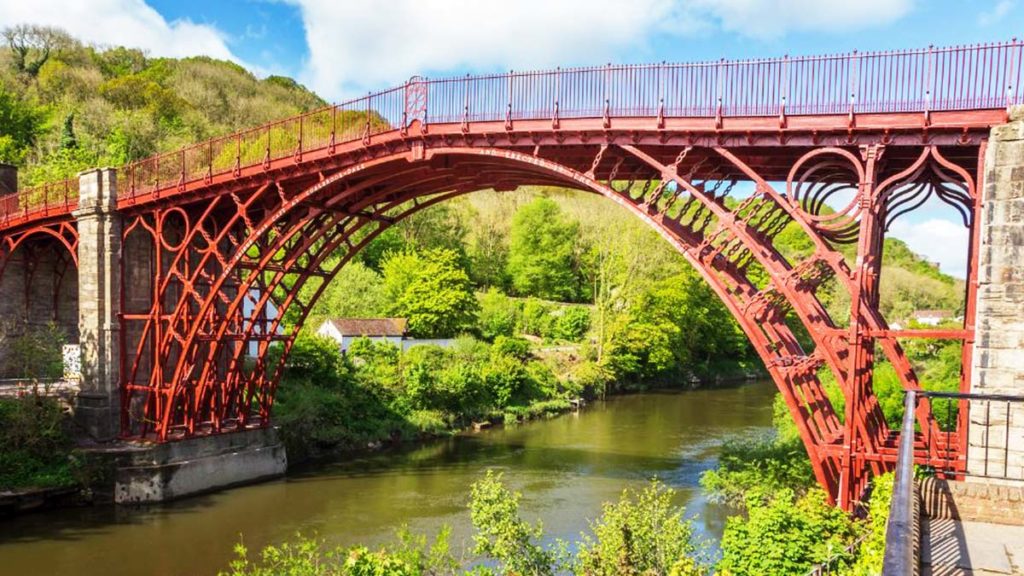
Truss Bridge
A truss bridge is a type of bridge that uses a series of interconnected triangles to support the weight of the bridge and any load on it. The triangles are made up of straight members, typically made of steel, timber, or concrete, that are connected at the joints. The members of the truss are designed to resist tension and compression forces, and the triangles provide the structure with rigidity and stability.
The truss design allows for the weight of the bridge and any load on it to be distributed evenly, and for the bridge to span longer distances than other types of bridges. Truss bridges can be constructed in a variety of configurations, including through, pony, and deck trusses, and can be designed to accommodate different types of traffic, from pedestrians to heavy vehicles.
The advantage of truss bridges is their strength and durability, which makes them suitable for use in a variety of settings and conditions, including areas with high winds, earthquakes, or heavy loads. They are also relatively easy and cost-effective to construct and require minimal maintenance.
Some examples of truss bridges include the Iron Bridge in Coalbrookdale, England, which was built in 1779 and is considered to be the first cast-iron bridge in the world, and the Forth Bridge in Scotland, which is a cantilever truss bridge that spans the Firth of Forth and was completed in 1890.
In recent years, advances in technology and materials have allowed for the design and construction of more complex and efficient truss bridges, including the cable-stayed truss bridge, which combines the stability of a truss with the strength of a cable-stayed bridge, and the arch-truss bridge, which uses an arch to support the weight of the truss.
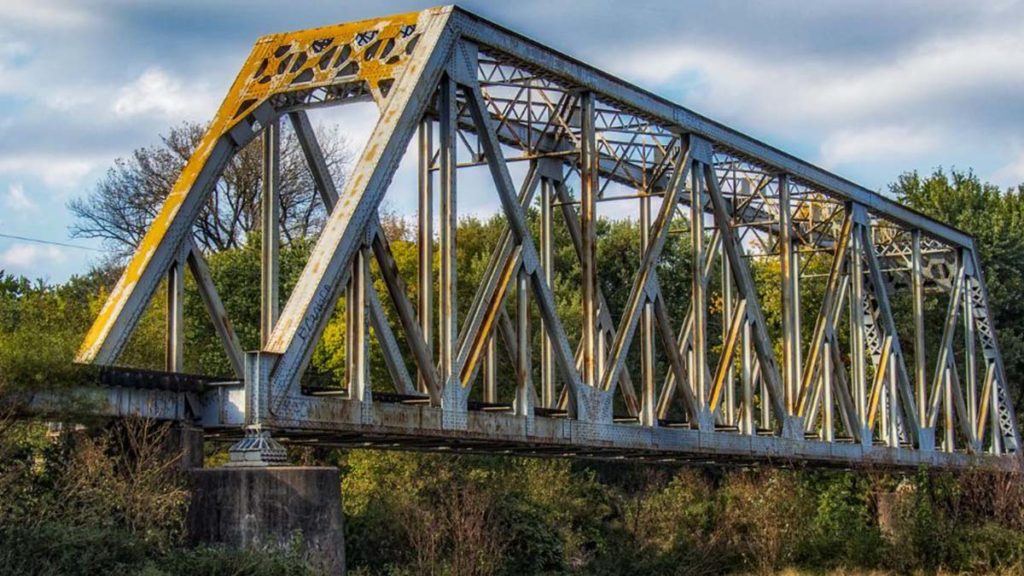
Arch Bridge
An arch bridge is a type of bridge that uses an arch or a series of arches to support the weight of the bridge and any load on it. The arches are typically made of stone, brick, concrete, steel, or a combination of these materials, and are designed to resist bending and compression forces.
The arch is a curved structure that is capable of supporting a great amount of weight, and this strength is due to the way that the arch distributes the weight of the bridge and any load on it. When weight is placed on the arch, the arch compresses and the weight is transferred outward along the curve of the arch to the abutments at each end. The abutments are the supports that hold up the ends of the arch and transfer the weight of the bridge to the ground.
The arch shape also helps to resist the bending force on the bridge, known as the bending moment, by redirecting it along the curve of the arch. This means that the arch can support a longer span than a beam bridge of the same height, and allows arch bridges to cross wider gaps with fewer supports.
Arch bridges are known for their beauty and elegance and are often used in architectural and landmark structures. Some famous examples of arch bridges include the Pont du Gard in France, the Sydney Harbour Bridge in Australia, and the Golden Gate Bridge in the United States.
There are several types of arch bridges, including the simple arch bridge, which consists of a single arch, and the multiple arch bridge, which has two or more arches. The deck of the bridge can be located on top of the arch, or it can be suspended from the arch by cables, as in a suspension bridge.
The advantages of arch bridges include their strength and durability, their ability to span long distances, and their aesthetic appeal. They can be used in a variety of settings, including urban and rural areas, and can be designed to fit with the surrounding environment. However, they can also be more expensive and complex to build than other types of bridges and require more maintenance to ensure their structural integrity over time.

Tied Arch Bridge
Tied arch bridges, also known as bowstring arch bridges, are a type of bridge that uses a combination of arch and suspension bridge designs. This type of bridge is characterized by a curved arch that is tied together by a horizontal structure above the deck. The tied arch design offers several advantages over other types of bridges, including increased span lengths, flexibility in deck placement, and a visually striking appearance.
One of the advantages of tied arch bridges is their strength and durability, as well as their ability to support heavy loads. They can be used for a variety of purposes, including highway and railway bridges, and are particularly well-suited for areas where high clearance is required. Tied arch bridges are also aesthetically pleasing, with their graceful arches and often dramatic profiles.
Examples of tied arch bridges can be found all over the world, including the Yangluo Bridge in China, which spans the Yangtze River and is the first tied arch bridge to exceed a main span of 1,000 meters (3,281 feet). Other notable examples include the Natchez-Vidalia Bridge in the United States, which spans the Mississippi River and is one of the longest tied arch bridges in the world, and the Øresund Bridge, which connects Denmark and Sweden and is one of the longest combined road and rail bridges in Europe.
Overall, tied arch bridges are a strong and durable type of bridge that can span long distances and support heavy loads, while also providing an aesthetically pleasing design. Their unique combination of arches and ties makes them a popular choice for modern infrastructure projects, particularly in areas where high clearance is required.
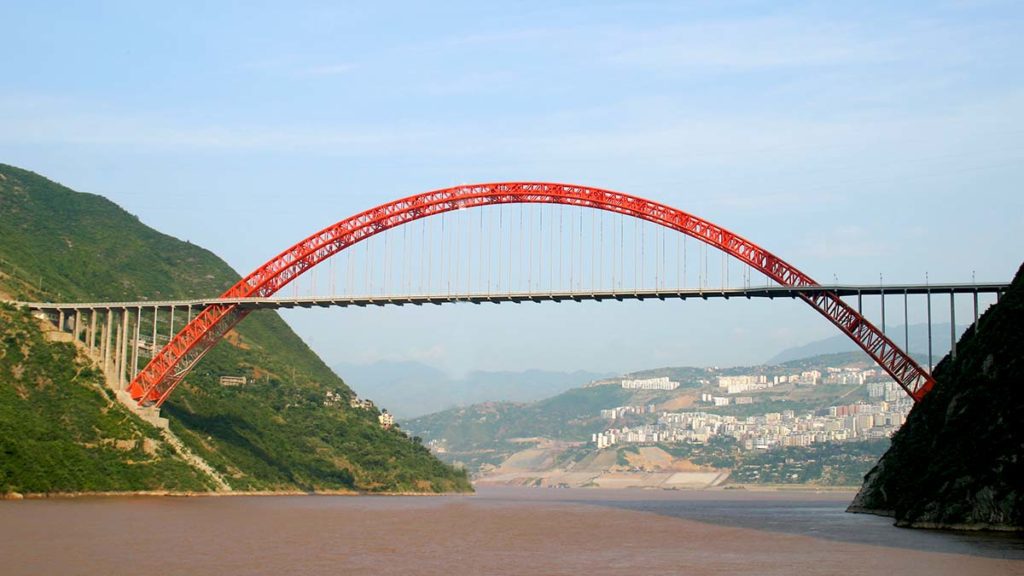
Suspension Bridge
A suspension bridge is a type of bridge that is supported by cables suspended from towers and anchored at either end. The deck of the bridge is supported by vertical cables that hang from the main cables, which run across the span of the bridge. The main cables are made up of thousands of individual wires, which are twisted together to create a strong, flexible structure that can support the weight of the bridge and any load on it.
The suspension bridge was first developed in the early 19th century and quickly became popular due to its ability to span longer distances than other types of bridges. The design of a suspension bridge allows for the weight of the bridge and any load on it to be distributed evenly, which reduces the stress on any one part of the bridge. This makes suspension bridges ideal for use in areas with high winds or earthquakes, as they are able to sway and flex with the movement of the ground.
Some famous examples of suspension bridges include the Golden Gate Bridge in San Francisco, the Akashi Kaikyo Bridge in Japan, and the Humber Bridge in England. These bridges are not only engineering marvels, but also iconic landmarks that attract visitors from around the world. The beauty and elegance of suspension bridges have also made them popular in architectural and cultural contexts, such as the pedestrian bridge at Brooklyn Bridge Park in New York City.
Despite their advantages, suspension bridges can be complex and expensive to construct, and require regular maintenance to ensure their structural integrity over time. They are also limited in terms of their load capacity and clearance height, which makes them less suitable for certain types of traffic. Nonetheless, the suspension bridge remains one of the most impressive and awe-inspiring structures in the world and continues to captivate and inspire people of all ages.
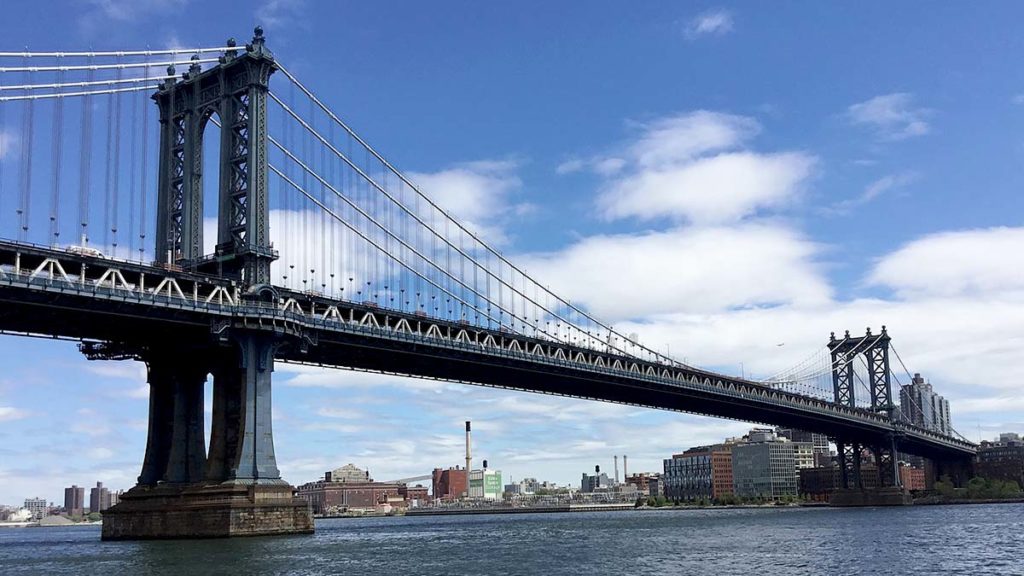
Cantilever Bridge
A cantilever bridge is a type of bridge that is supported by a structure that is anchored at one end and free to move at the other end. The bridge deck is supported by two cantilevers that extend from the anchor points, and a suspended span that connects the two cantilevers. The cantilever design allows for the bridge to span longer distances than a simple beam bridge, and the suspended span provides additional support and stability.
Cantilever bridges were first developed in the late 19th century, and quickly became popular due to their ability to span long distances and support heavy loads. One of the most famous examples of a cantilever bridge of 14km (9 miles) is the Forth Bridge in Scotland, which spans the Firth of Forth and was completed in 1890. The bridge is a steel cantilever bridge that was designed to carry rail traffic and is still in use today.
Cantilever bridges are also commonly used in modern infrastructure projects, particularly in areas where high clearance is required, such as over navigable waterways or highways. They are often preferred over other types of bridges because of their strength and durability, and because they require less maintenance than other types of bridges. However, they can be more expensive to construct and require more complex engineering than some other types of bridges.
Overall, cantilever bridges are an important part of modern infrastructure, and are essential for connecting communities and facilitating transportation across bodies of water or other barriers. The unique design of cantilever bridges provides an elegant solution for spanning long distances and supporting heavy loads, making them an important part of the history and future of engineering and construction.
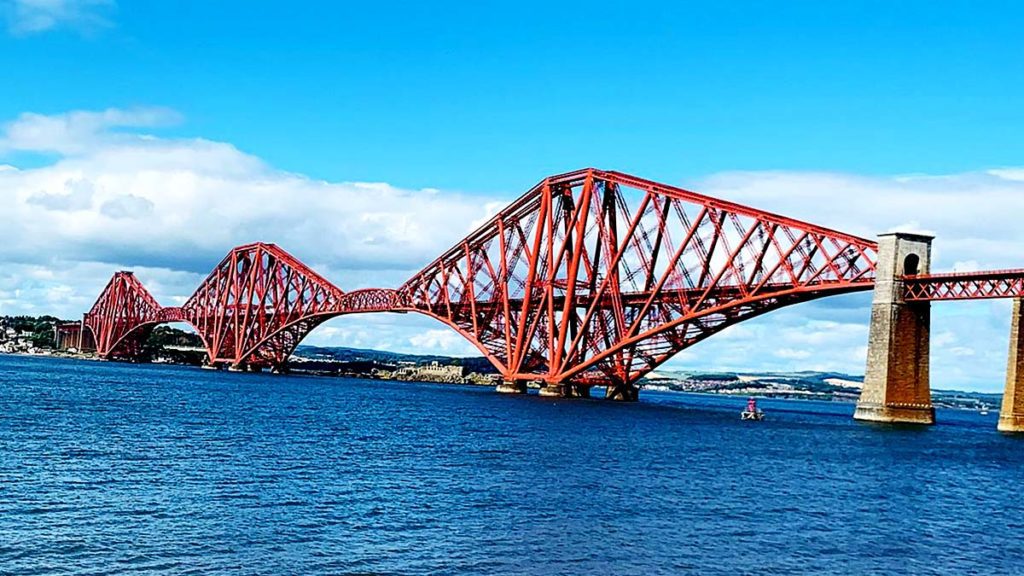
Cable-Stayed Bridge
A cable-stayed bridge is a type of bridge that is supported by cables that run directly from the bridge deck to towers that are anchored to the ground. The cables are arranged in a fan-like pattern, with multiple cables radiating out from the tower and connecting to specific points on the bridge deck. The cables are made of high-strength steel and are anchored to the ground, which allows the bridge deck to be suspended in the air without the need for vertical support.
One of the main advantages of cable-stayed bridges is their ability to span long distances while requiring fewer materials than other types of bridges, such as suspension bridges. This makes them a popular choice for infrastructure projects that require high clearance or long spans, such as highways or waterways. Cable-stayed bridges are also highly durable and require less maintenance than other types of bridges, making them a cost-effective solution for long-term infrastructure needs.
Cable-stayed bridges have become increasingly popular in recent years, with many iconic examples built around the world. The Millau Viaduct in France, for example, is a cable-stayed bridge that spans the Tarn River and is the tallest bridge in the world, standing at 343 meters (1,125 feet) tall. The cable-stayed Rama VIII Bridge in Bangkok, Thailand, is another example of a cable-stayed bridge that has become an iconic symbol of the city.
Overall, cable-stayed bridges offer a unique and effective solution for spanning long distances and supporting heavy loads, while also providing an elegant and visually striking structure. Their ability to withstand high winds and other environmental factors makes them a reliable and durable choice for infrastructure projects, and their sleek and modern design has made them a popular choice for cities and regions looking to create bold and impressive landmarks.
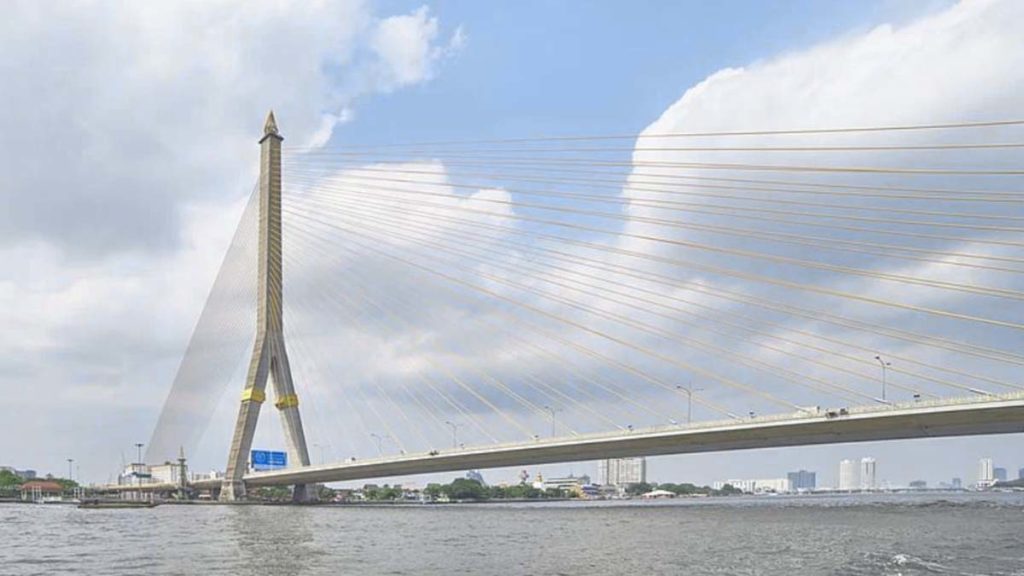
FAQs
Q: What are the different types of bridges?
A: There are many different types of bridges, including beam bridges, arch bridges, suspension bridges, cable-stayed bridges, truss bridges, and cantilever bridges. Each type of bridge has its own advantages and disadvantages depending on the intended use and location.
Q: What is a beam bridge?
A beam bridge is a type of bridge that consists of one or more horizontal beams supported by piers or abutments at each end. Beam bridges are typically used for shorter spans, and can be made from a variety of materials, including wood, steel, and concrete.
Q: What is a truss bridge?
A: A truss bridge is a type of bridge that consists of a series of interconnected triangles, which provide strength and stability to the bridge. Truss bridges can be made from a variety of materials, including wood, steel, and concrete.
Q: What is an arch bridge?
A: An arch bridge is a type of bridge that consists of a curved arch that spans an open space and supports the weight of the bridge and any traffic or loads that cross it. Arch bridges can be made from a variety of materials, including stone, brick, concrete, and steel.
Q: What is a suspension bridge?
A: A suspension bridge is a type of bridge that consists of two tall towers connected by a horizontal deck, which is supported by cables that hang from the towers. Suspension bridges are often used for longer spans and can be made from a variety of materials, including steel, concrete, and composite materials.
Q: What is a cantilever bridge?
A: A cantilever bridge is a type of bridge that is supported on one end by a pier or abutment, and on the other end by a cantilever, which is a long beam that extends out from the pier or abutment. Cantilever bridges can be used for longer spans, and can be made from a variety of materials, including steel and concrete.
Q: What factors are considered when choosing a type of bridge?
A: The choice of bridge type depends on a variety of factors, including the span length, the expected traffic volume, the location and environment, the construction and maintenance costs, and the aesthetic design requirements. Structural engineers and architects work together to select the most appropriate type of bridge for each specific project.
Q: Are there any famous bridges?
A: Yes, there are many famous bridges around the world, including the Golden Gate Bridge in San Francisco, the Tower Bridge in London, the Brooklyn Bridge in New York City, and the Sydney Harbour Bridge in Australia, among many others.
Q: How long do bridges last?
A: The lifespan of a bridge depends on a variety of factors, including the materials used, the design, the location, and the amount of traffic it carries. Some bridges have been known to last for centuries, while others may require major repairs or replacement after just a few decades.
Also read:
![]()






